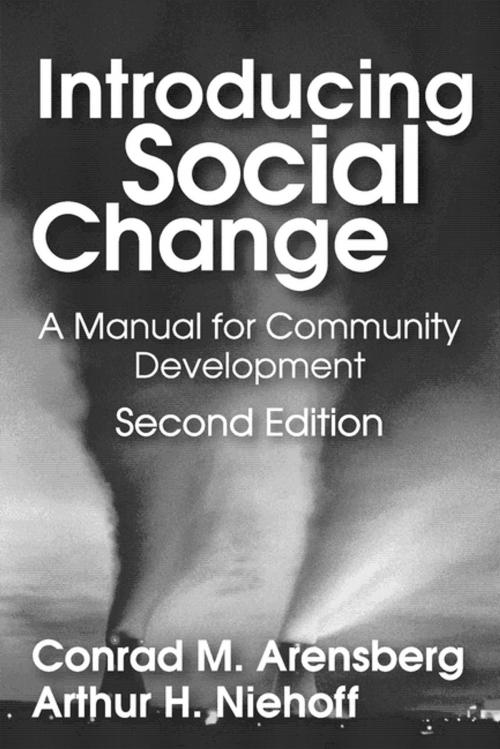Introducing Social Change
A Manual for Community Development
Nonfiction, Social & Cultural Studies, Social Science, Anthropology, Sociology| Author: | Conrad M. Arensberg | ISBN: | 9781351511599 |
| Publisher: | Taylor and Francis | Publication: | July 5, 2017 |
| Imprint: | Routledge | Language: | English |
| Author: | Conrad M. Arensberg |
| ISBN: | 9781351511599 |
| Publisher: | Taylor and Francis |
| Publication: | July 5, 2017 |
| Imprint: | Routledge |
| Language: | English |
The development of industry in Europe and the United States has resulted in great marvels of production. However, non-Western nations, with a few exceptions, have not yet shared fully in this productivity, despite the desires of their leaders to do so. Also, in the United States, and in other industrial nations, there are sizeable minority groups which have not been fully assimilated into the productive pattern of the majority. Most live as poverty enclaves within the greater society. This socioeconomic imbalance has contributed to unrest in both the agrarian and industrial nations.Introducing Social Change deals with numerous topics of social change: cultural problems of change in general; a description of the concept of culture; a discussion of cultural change in its various forms; an introduction to the process of directed change; a discussion of the motivation necessary to bring about change; a treatment of the method of adapting an innovation to existing ideas and customs; the profile of the primary characteristics of most developing nations; the main characteristics and cultural values of America as a sample urban, industrial culture; and field problems of the change agent, and in particular those methods from anthropology that can be modified for use.Developments in the industrial countries, particularly the United States, have demonstrated the need for this second edition. When the original version was produced, little thought or activity was given to development efforts among ethnic minorities of industrial countries. Development was thought of almost exclusively as an activity relevant to the developing, non-industrial nations. It has become apparent that ethnic groups in industrial nations are also in need of economic development. Government policies, including funding, have been increasingly pointed in this direction.
The development of industry in Europe and the United States has resulted in great marvels of production. However, non-Western nations, with a few exceptions, have not yet shared fully in this productivity, despite the desires of their leaders to do so. Also, in the United States, and in other industrial nations, there are sizeable minority groups which have not been fully assimilated into the productive pattern of the majority. Most live as poverty enclaves within the greater society. This socioeconomic imbalance has contributed to unrest in both the agrarian and industrial nations.Introducing Social Change deals with numerous topics of social change: cultural problems of change in general; a description of the concept of culture; a discussion of cultural change in its various forms; an introduction to the process of directed change; a discussion of the motivation necessary to bring about change; a treatment of the method of adapting an innovation to existing ideas and customs; the profile of the primary characteristics of most developing nations; the main characteristics and cultural values of America as a sample urban, industrial culture; and field problems of the change agent, and in particular those methods from anthropology that can be modified for use.Developments in the industrial countries, particularly the United States, have demonstrated the need for this second edition. When the original version was produced, little thought or activity was given to development efforts among ethnic minorities of industrial countries. Development was thought of almost exclusively as an activity relevant to the developing, non-industrial nations. It has become apparent that ethnic groups in industrial nations are also in need of economic development. Government policies, including funding, have been increasingly pointed in this direction.















